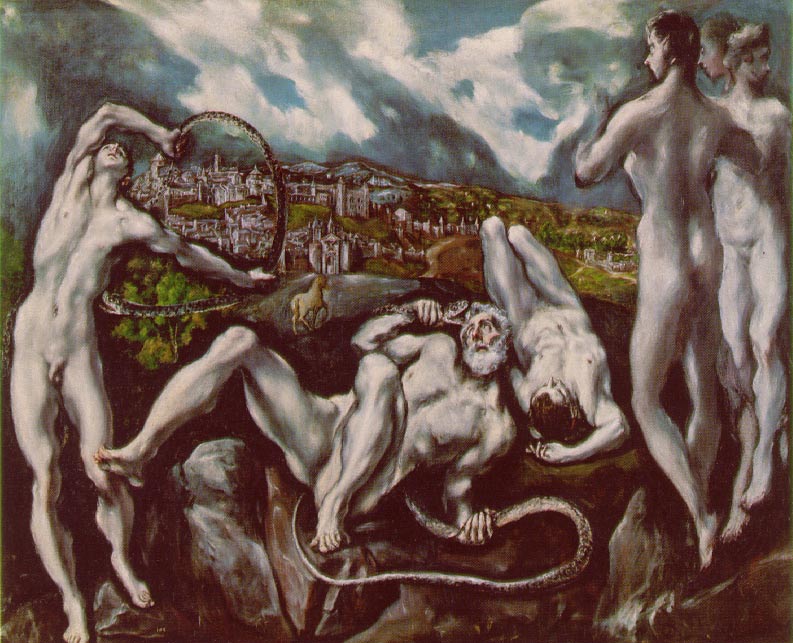The National Gallery’s once-in-a-lifetime El Greco exhibition closes next Sunday, so this week’s picture is one of the star attractions of the show: Laocoon, which was painted by the artist towards the end of life, in the early 1610s. Like last week’s painting of St Lucy by Francesco del Cossa, this work was once owned by the formidable American collector Samuel H. Kress and after the El Greco exhibition closes in London it will return to its permanent home, the National Gallery of Art in Washington.
El Greco drew the subject of his painting from passages describing the fall of Troy in Virgil’s epic poem The Aeneid. Laocoon appears in Virgil’s narrative as a Trojan priest who warned his fellow citizens against accepting the wooden horse offered to them by the Greeks. The Greeks claimed that the horse was an offering to Minerva, whose temple lay within Troy. While the Trojans were debating the offer, Laocoon was suddenly attacked by two huge snakes, who coiled themselves around him and his two sons. All three died in agony. The Trojans interpreted this as a sign of Minerva’s displeasure (when in fact it was the doing of Apollo, who favoured the Greeks in the battle for Troy), so the gates were opened to the wooden horse, and the city fell.
El Greco was born on the island of Crete, where he learned the rudiments of art before leaving to study in Italy and finally settling in the Spanish city of Toledo in the late 1570s. In Rome he saw a famous classical sculpture of the death of Laocoon and his sons, which had only been dug up in 1506, and which clearly stuck in his memory. In El Greco’s painting, which resembles a vision or hallucination, the...


